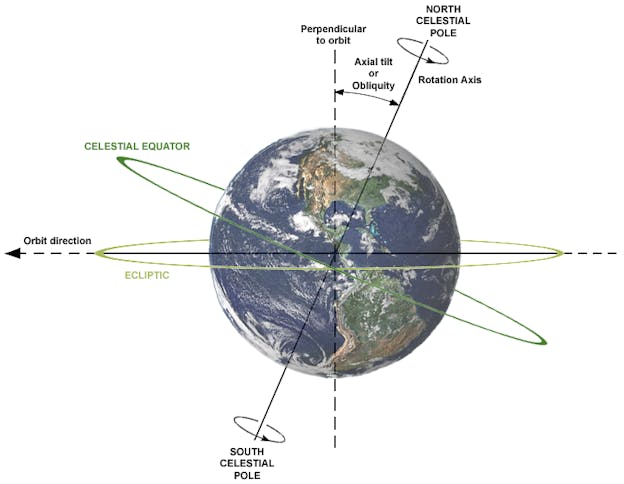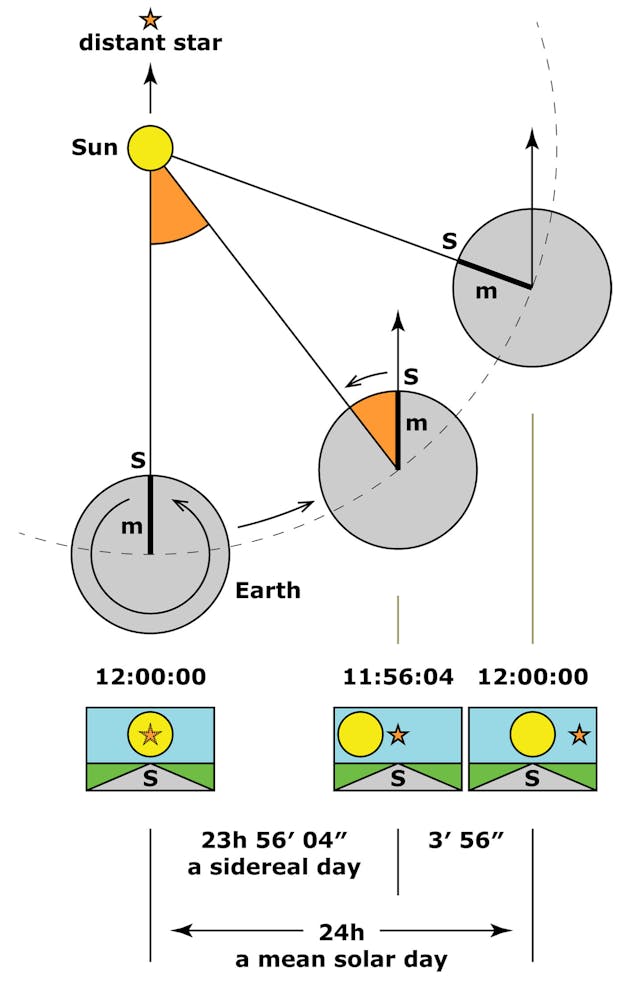Watches & Wonders 2025: Understanding The Vacheron Constantin Solaria Grand Complication, Part II
“My god, it’s full of stars.” – Astronaut Dave Bowman, 2001, A Space Odyssey
The Vacheron Constantin Solaria’s solar complications, which we looked at in Part I, are highly complex at first glance, but as I hope we discovered, once you understand what they’re supposed to represent, they look very different – you see that behind the apparent complexity there is an order and logic that reflects the cyclic nature of the motions of heavenly bodies. The tide indication, moonphase, Equation of Time, solar declination and culmination, solar height, and the display of the seasons and signs of the Zodiac, as well as the perpetual calendar (which after all is necessary thanks to the length of the year) are a wide-ranging catalog of the relationships between the Earth, Sun, and Moon.

As we said in Part I, the front of the watch is largely devoted to solar indications; the back of the watch is devoted to stellar indications. As with the solar indications it’s helpful to bear in mind that the stellar indications are for the date for which the watch is set in the images – August 29, 2025 – and that the location is Geneva.

The back of the Solaria consists of two sapphire disks. The upper disk is fixed, and is engraved with the star chart. The lower disk rotates once per sidereal day, and has a grey-black ellipse on it; stars within the ellipse are the ones currently visible in the sky above the observer’s location (in this case, Geneva). The upper disk also has a yellow ellipse on it, which represents the Plane of the Ecliptic (the plane in which the planets orbit the Sun) and a white ellipse, which represents the Celestial Equator (a projection of the Earth’s equator onto the Celestial Sphere).
The Solaria has several celestial complications. It shows the stars visible overhead at any particular time of day or night; it shows sidereal time; it shows the current month; and it has a complication unique to the Solaria – a stellar temporal tracking indication, based on a rattrapante chronograph, which allows the owner to calculate the time until a given star crosses the local meridian (stellar culmination).
Sidereal Time Indication
Since the Earth’s axis is tilted, the plane of the Celestial Equator is tilted with respect to the Plane of the Ecliptic.

Those two points of intersection can be seen on the star chart on the back of the Solaria as well. The reason this is useful info, is because those points are used to define a sidereal day.
A solar day is defined as the time it takes for the Sun to return to a fixed point in the sky. A sidereal day’s based on the same idea, but instead of using the Sun, a sidereal day uses a different fixed point in the sky – a star could be used, or you could use another point as well. Sidereal time uses one of the two points where the Celestial Equator intersects the Plane of the Ecliptic – a point known as the Point of Aires.
Because the Earth is moving along its orbit at the same time that it’s rotating, the Earth actually has to rotate slightly more than one full revolution in order for the Sun to return to the same point in the sky. Stars are so far away that they will appear at a fixed point in the sky after one actual rotation of the Earth on its axis, rather than the slight over-rotation necessary for the Sun. A solar day is therefore slightly longer than a sidereal day – by about three minutes and 56 seconds.

We said earlier that you could use a star as a reference point, but since from the Earth, stars appear to be attached to the interior of the celestial sphere, you could use any other point on the celestial sphere. The Point of Aires as we mentioned is one of the two points where the Plane of the Ecliptic and the Celestial Equator intersect. Of those two points, the Point of Aires is the one which was located in the constellation of Aires in ancient times. Thanks to the precession of the Earth’s axis (the Earth wobbles on its axis very slowly, taking about 26,000 years to make one circle) the Point of Aires is now in the constellation Pisces. This is what Pisces looks like:

And lo and behold, one of the two points shown on the back of the Solaria where the Plane of the Ecliptic (yellow) and Celestial Equator (white) intersect, is right in the middle of the constellation Pisces, right where it should be.

Since the Point of Aires is for all intents and purposes motionless with respect to the stars, the yellow and while ellipses for the Plane of the Ecliptic and the Celestial Equator are printed on the upper, immobile crystal, along with the stars themselves. A sidereal day begins when the Point of Ares crosses the observer’s local meridian, which is a projection of the observer’s line of longitude onto the celestial sphere; this line, like lines of longitude, runs North to South. The southern end of the local meridian is shown by the short green reference line on the lower crystal, which is centered on the dark grey oval showing the visible part of the sky. The stars from an observer’s viewpoint rotate past the local meridian, each one transiting the meridian once per day.
The Point of Aires as shown above, is directly opposite a time roughly between 20:30 and 20:45 on the sidereal hours ring. The watch is set for 10:09 AM on March 30, so Summer Time is in effect in the Central European Time Zone. Standard time is one hour behind, so CET standard time on that date would be 9:09, and since CET standard time is an hour ahead of UTC, UTC for that time and date is 8:09. If you plug that time into a sidereal time calculator, along with the longitude of Geneva, you’ll get a sidereal time of 20:36.
The Celestial Vault Display
The stars which are above the horizon are shown inside the grey ellipse which is on the lower, rotating sapphire disk (which also carries the local meridian indicator and the sidereal hours).

Since the lower disk is geared to rotate once per sidereal day, the stars shown rising in the Eastern and setting in the Western sky will always be accurately displayed, although of course, they won’t be visible during daylight hours (the watch in the illustration is set to 10:10 AM, so the stars shown aren’t actually visible at that time).
The stars overhead can be thought of as sitting on the inside of a giant sphere (the “celestial vault”) but of course, a star chart is two dimensional, not three dimensional. The star map on the Solaria is a projection of the celestial vault overhead, onto a flat surface and like projections of the Earth onto a flat map, there are some distortions, which become more and more extreme as you get closer and closer to the edge (you see similar distortions on projections of the Earth onto a map, where Greenland can look freakishly huge and Antarctica stretches across the entire bottom of the map). In the same way, the closer you get to the edge of the Solaria star map, the more stretched out the constellations seem to be.
The Annual Month Display
The sidereal time display also functions as a month indicator, albeit one that is only accurate once per day. The N-for-North marker on the sidereal hour ring marks sidereal midnight, and since a sidereal day is four minutes faster than a civil day, it will gradually move ahead in four minute increments per day when measured against the outer, fixed month ring. At sidereal midnight, the N marker will show the current month and roughly the date as well; if you look at the back of the Solaria, you’ll see that when the N is adjacent to the Point of Aires – sidereal midnight – it will be just inside the month of March, and very close (since it’s the 29th) to the beginning of April.
The Temporal Tracking Indication
This is a completely new and extremely clever complication, which allows you to compute the elapsed time necessary for a chosen star to transit the local meridian – that is, to transit its zenith, or highest point in the sky. Astronomical transits historically were used to set precision observatory clocks, since the time at which transits occur is highly exact and determined by the rotational speed of the Earth. To begin to procedure, you start the rattrapante chronograph and let it run until the two superimposed seconds hands are over the green indicator showing the line of the local meridian.

At that point, you split the hands. One hand will stop, and the other will continue to travel around the dial. Stop that hand when it intersects the star you’ve chosen, and the amount of time what must elapse before the transit occurs is shown on a small hour ring at the center of the dial – the arrow pointing to the elapsed time period is on the opposite end of the split chronograph hand.
Other Complications
This catalog of astronomical complications does not of course, include the host of additional complications to be found in this watch; it can be used as a standard rattrapante chronograph (there is a 60 minute counter on the back of the dial, as well as a fixed elapsed seconds track); it is a minute repeater with Westminster chimes; there’s a tourbillon; there is the aforementioned (Part 1) perpetual calendar and GMT indication and there are a number of interesting innovations in various complications as well (including the use of gold together with steel for the construction of the hammers, which provides greater mass for the size and increases the energy delivered to the gongs).
It’s the astronomical indications, though, which really set the Solaria apart. Vacheron Constantin has been exploring increasingly complex and exotic astronomical complications, culminating with last year’s Berkley Grand Complication pocket watch. Understanding the Solaria is an exercise not just in understanding astronomy and orbital mechanics; it’s an exercise in standing outside oneself and seeing how the motions of heavenly bodies look as time passes, not just from Earth, but from the perspective of the heavens themselves as well.
The Vacheron Constantin Les Cabinotiers Solaria Ultra Grand Complication ref. 9600C/000G-231C: Case, 45mm x 14.99mm, 18k white gold, sapphire crystals front and back. Movement, Vacheron Constantin caliber 3655, 36mm x 10.96mm, with 72 hour power reserve. Complications include perpetual calendar, 14 astronomical and 3 lunar indications, split seconds chronograph with isolator; peripheral power reserve indicator (on the back) and minute repeater with Westminster carillon chimes. Unique piece; price available upon request (Vacheron will produce the Solaria on request as part of the Les Cabinotiers collection, although it’s a piece unique in the configuration shown). Movement with Geneva Seal, and of course, it’s the most complicated wristwatch ever made.

